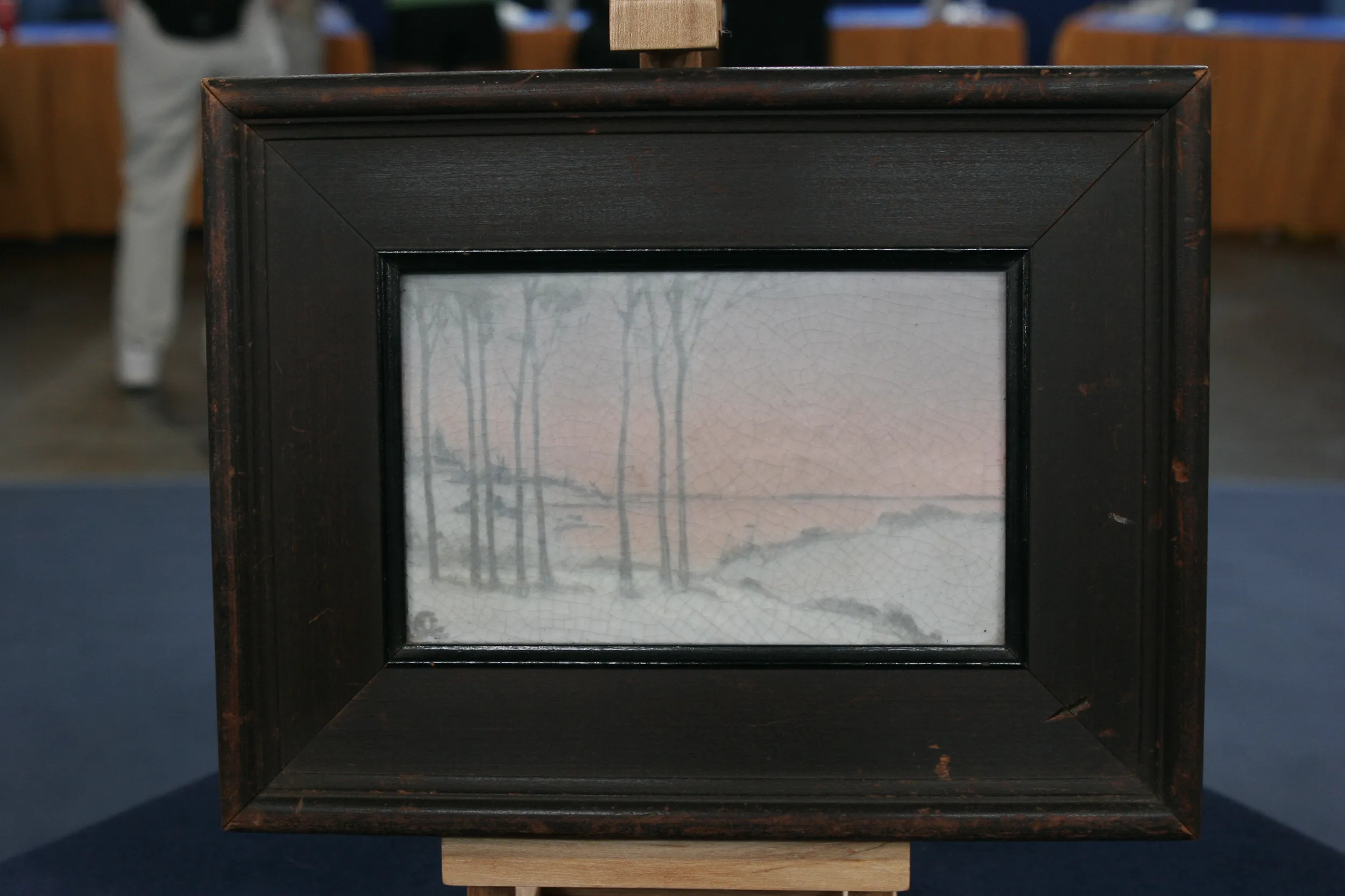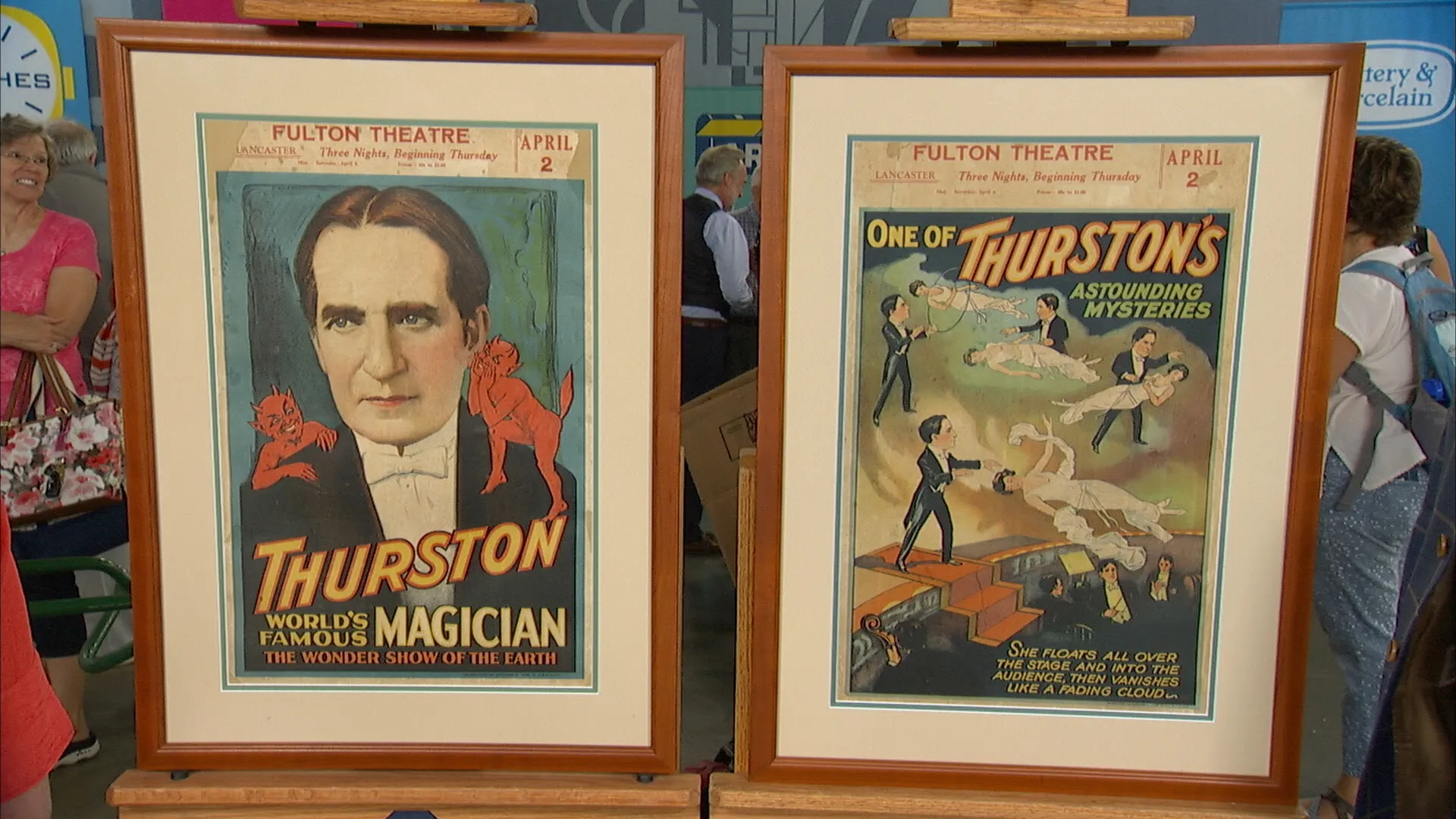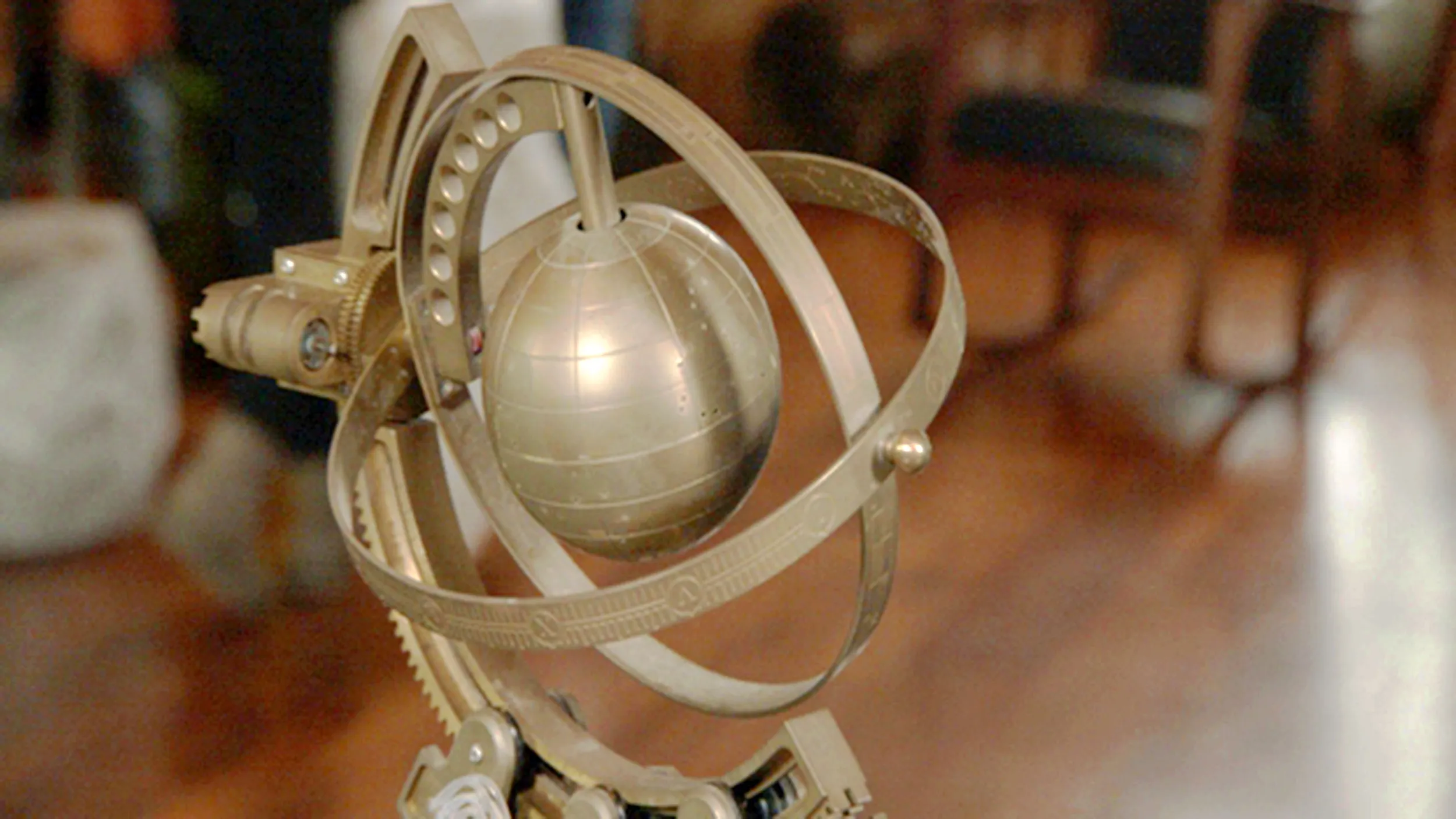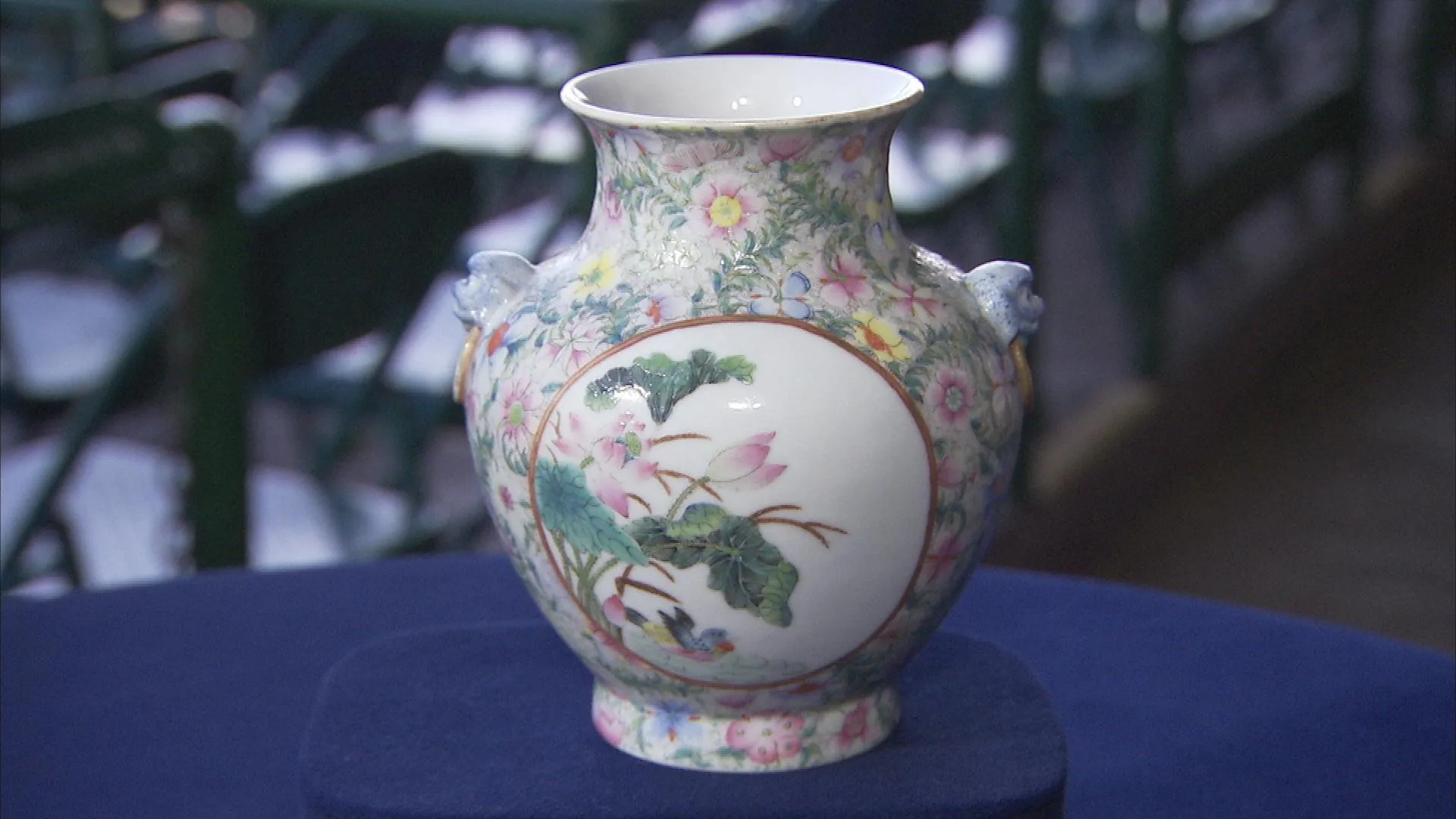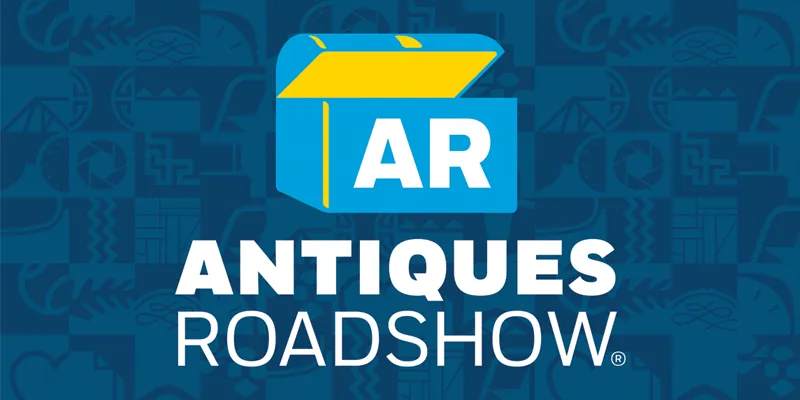Rembrandt & Whistler Etchings
APPRAISER: You have brought us four very interesting etchings today. Can you tell me how you came by them?
GUEST: My father collected art probably in the 19...really from the 1940s, '50s and '60s.
APPRAISER: He was buying art, where?
GUEST: In New York City.
APPRAISER: How long had he had these before you got them?
GUEST: I think he bought these probably in the 1950s. So probably as long as... as old as I am.
APPRAISER: 60 years or so. And do you have any idea how much he would have purchased them for or is that just information that's lost to time?
GUEST: It's lost to time.
APPRAISER: I got you, all right. I'll start with the print closest to me here. You actually have two etchings by Rembrandt: this one here and this one here. The one closest to me is an etching from around 1652. It's called The Peasant Family and the Tramp. The etching here is a self-portrait of Rembrandt, and that dates from 1634. The etching closest to you is by James Whistler, and that dates from around 1863. It's a view of the Thames at Battersea.
GUEST: Oh, okay.
APPRAISER: And the etching up here is also by Whistler, and that's titled The Longshoremen. It's dock workers who worked on the Thames, and he made that in 1859. You have this Rembrandt self-portrait signed Rembrandt and dated 1634. This is an unsigned, undated Rembrandt. And this Whistler here from around 1863 is inscribed with Whistler's name, probably not in Whistler's hand, and then it's titled Cadogan Pier, which is a secondary title for this, Cadogan Pier at Battersea on the Thames. Also inscribed here "early proof." And that inscription right down there could very well be in Whistler's hand. That would not surprise me. It's interesting because each one of these gives us an opportunity to work on questions of authenticity, age, when they were printed... Just what we get our hands into every day in my business. So let's start with the self-portrait up here from 1634. What we happen to know about this is that there are no later impressions known. Every one that we see on the market or in museums, what have you, in private collections were printed during his lifetime. The plate was lost after Rembrandt passed, and there are no impressions posthumously printed. So that's a good thing. This one, The Peasant Family and the Tramp, that is the signature of a French collector who was collecting in Paris in the early 1800s. His name is Naudet, and that's actually his name reversed because it's coming through the back of the sheet. And the date, which I believe is 1825, as I read it. And his intention obviously wasn't to mar the sheet when he wrote that on there. Over time it bled through and now you can see it, and it is... obviously, it detracts from the image. Naudet was... is a known collector, was not the most astute collector. So it's very likely that this is probably a late 18th century or posthumous impression of this subject. Still a very good one, but not a lifetime printing. This Whistler proof next to you of Battersea, I do believe that's in Whistler's hand. The telltale sign on this is this sort of drypoint up here, which is scratched right into the plate. All the dark rich inking on the boats here, the great contrast. There's no wear whatsoever in this, so it is, in my eyes, a very, very early impression from the plate. And this is sort of typical appearance for that image of longshoremen on that same paper. Probably a lifetime impression, not terribly uncommon. Of the four, probably the most common.
GUEST: Okay.
APPRAISER: So you have sort of the masters of etching over three centuries at work here. Do you have any idea what these might be valued at?
GUEST: The fact that the Rembrandt, the self-portrait, there weren't any prints made after his life, that would probably make it pretty valuable.
APPRAISER: Of that subject. Right. That's a good supposition on that.
GUEST: So that's probably the most valuable one.
APPRAISER: Right.
GUEST: And to say how much it would be worth, I don't know, somewhere $10,000 or more. The other ones probably, you know, they might be worth somewhere over $1,000.
APPRAISER: Okay, well, let's go around the horn, then.
GUEST: Okay, around the horn.
APPRAISER: We'll go around the horn and we'll start lowest to highest, how about that?
GUEST: Okay, lowest to highest, okay.
APPRAISER: So the Whistler longshoremen, I would put a replacement value on that of around $4,000.
GUEST: Okay.
APPRAISER: On the Battersea dawn, the other Whistler, I would put a replacement value of approximately $6,000. On the Rembrandt, The Peasant Family and the Tramp, that's going to have a replacement value at around $10,000.
GUEST: Okay.
APPRAISER: Saving the best for last, and this is absolutely sort of the...one of the best presentations I've seen of this very important and very scarce self-portrait by arguably the master of etching of all time, that's going to have a replacement value at $80,000. So all told here...(laughing)...you have a round $100,000 in replacement value on these four etchings.
GUEST: My goodness. (laughing) Oh, happy day.
APPRAISER: Ka-ching.
GUEST: Ka-ching, right. Wow, thank you for that information. I had no idea it would be that much.

$100,000
Featured In

episode
Baton Rouge, Hour 1 (2014)
Host Mark L. Walberg and appraiser Leigh Keno discuss Campeche chairs in Baton Rouge.
2D Art
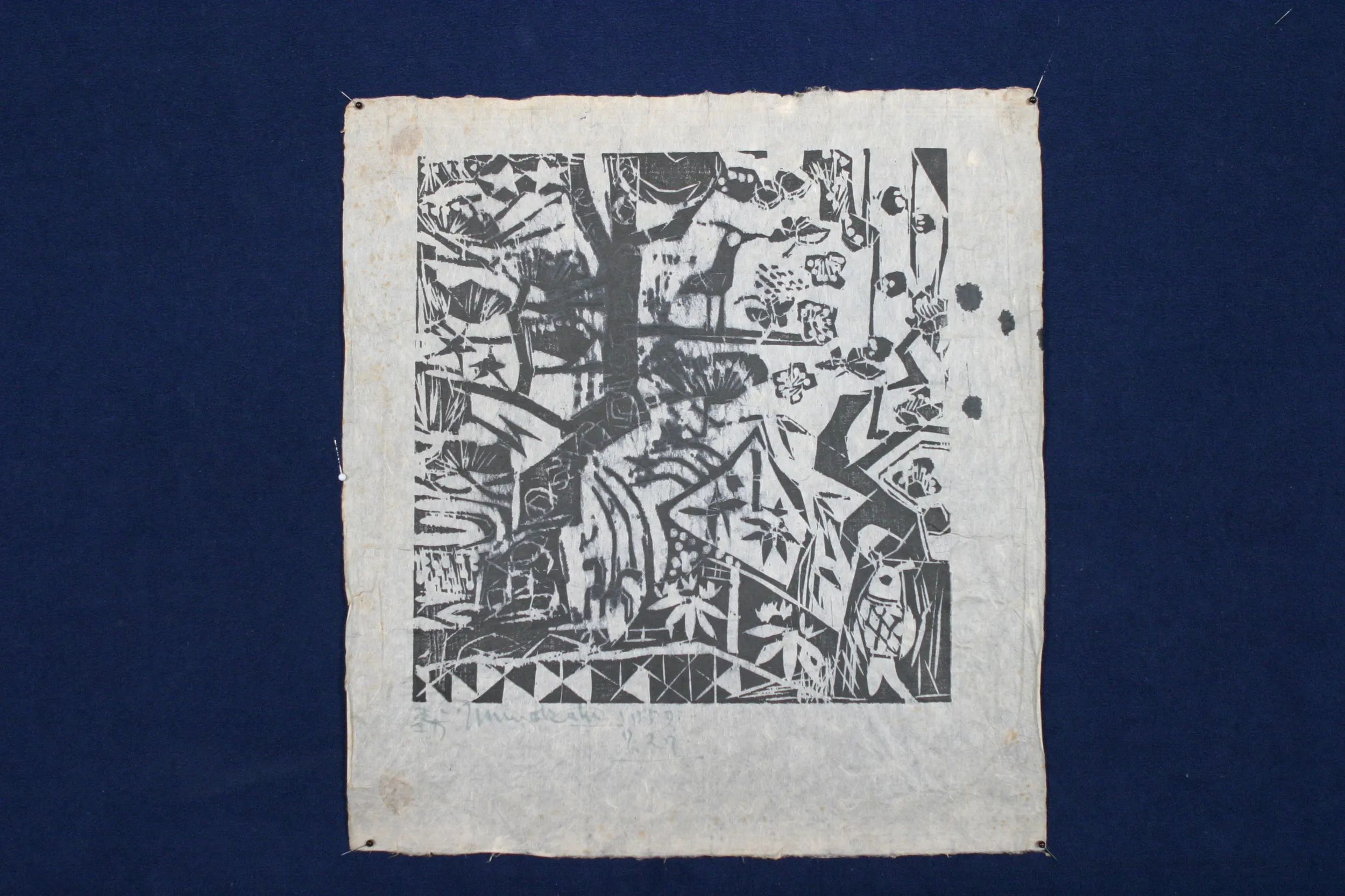
appraisal

appraisal

appraisal
Understanding Our Appraisals
Placeholder
